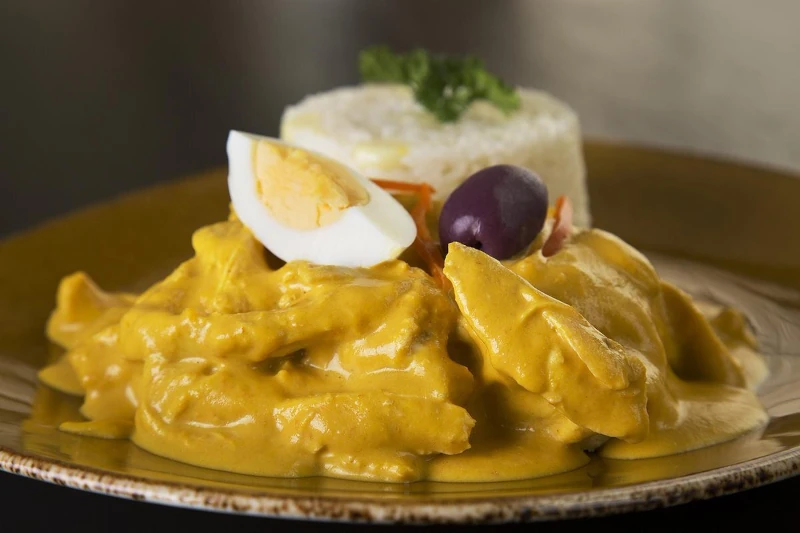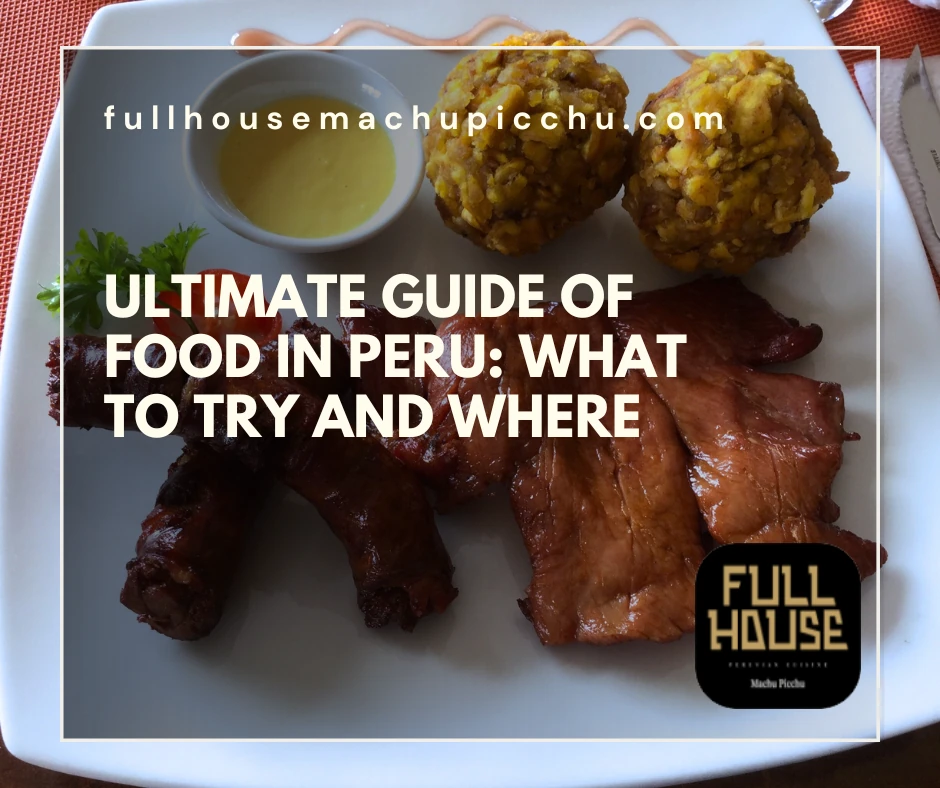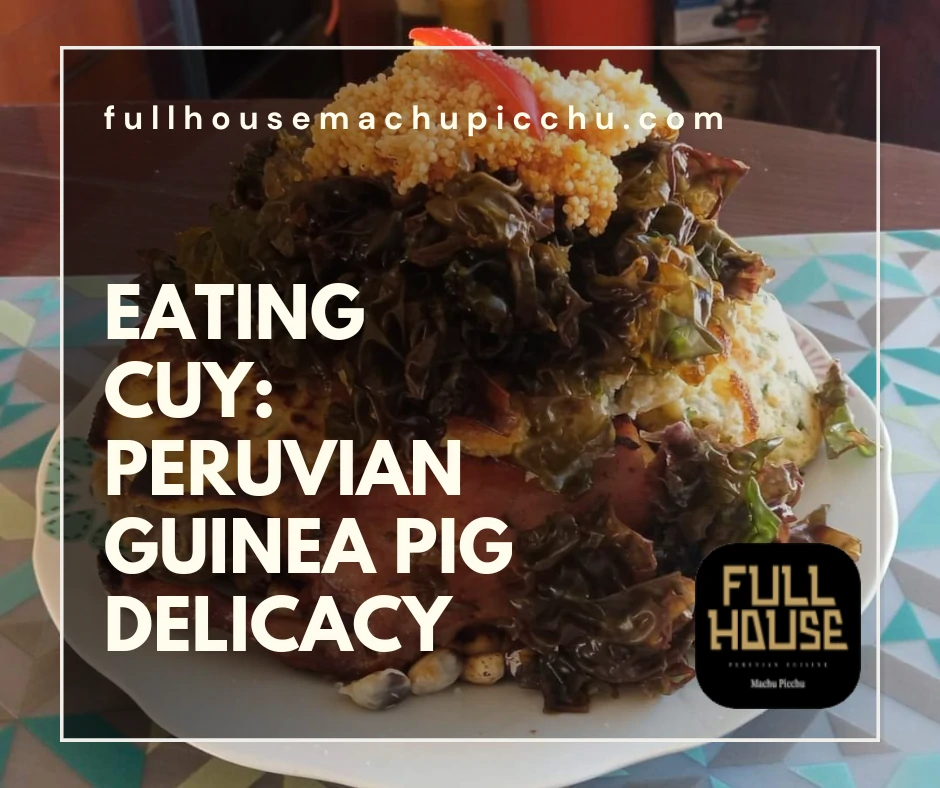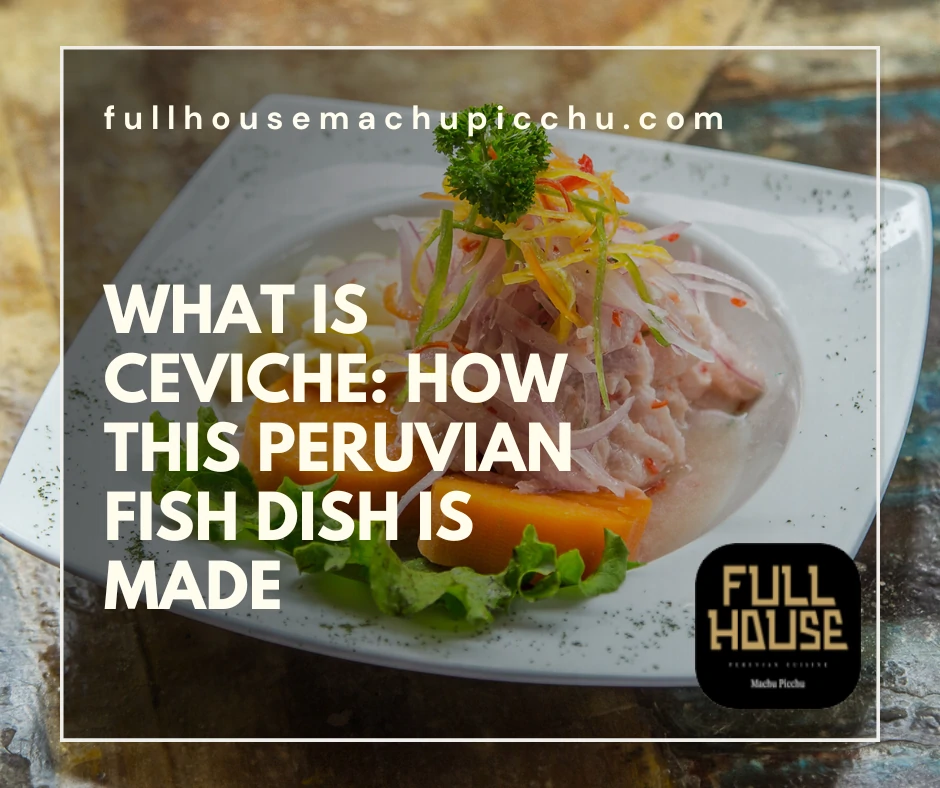Food in Peru offers an incredible variety of flavors and culinary traditions. This guide highlights the best dishes and where to enjoy them. Whether you’re in bustling cities or remote towns, Peruvian food will captivate you.
From the coast to the highlands, each region has its own specialties. You’ll discover seafood delights, hearty mountain fare, and Amazonian delicacies. Get ready to experience the true essence of Peru through its vibrant cuisine.
In this guide, we’ve carefully selected must-try dishes from every corner of the country. You’ll also find recommendations on the best places to savor these culinary gems. Dive in and start your Peruvian food adventure now.
Coastal Cuisine: Discovering Peru’s Freshest Seafood Delights
Peru’s coastal region offers an abundance of fresh and flavorful seafood that showcases the richness of Peruvian cuisine. As you explore the food in Peru, you’ll quickly realize that the coast is a seafood lover’s paradise. From the bustling markets of Lima to the quiet fishing villages along the Pacific. The variety and quality of seafood are unparalleled.
One of the most iconic dishes you must try is ceviche, Peru’s national dish. Ceviche features fresh raw fish marinated in lime juice, mixed with red onion, cilantro, and aji pepper. This vibrant dish has sweet potato or corn, adding a perfect balance of flavors and textures.
In Lima you will find some of the best cevicherías, where locals and visitors alike flock to taste this delicacy. Many consider La Mar, a popular restaurant, one of the top places to enjoy ceviche. However, the coastal cuisine doesn’t end with ceviche; it’s just the beginning.
Another must-try dish is tiradito, which is similar to ceviche but with a twist. Tiradito features thinly sliced raw fish, bathed in a spicy sauce made from aji amarillo and lime juice. The difference lies in the presentation and lack of onions, making it a smoother, more refined experience.
For those who love a hearty meal, chupe de camarones is a must. This Peruvian dish is a rich shrimp chowder that combines shrimp, potatoes, milk, cheese, and spices. All these ingredients turn into a warming, flavorful soup.
It’s particularly popular in the southern coastal region of Arequipa. This is where you can find many local restaurants serving this comforting dish.

Where to Find the Best Coastal Dishes
While Lima is the epicenter of coastal cuisine, other coastal towns also offer incredible food. In Paracas, a small town by the sea, you can enjoy fresh seafood straight from the boat. Many local restaurants serve catch-of-the-day dishes, ensuring that the seafood is always fresh.
Pisco, located just a short drive from Paracas, is famous not only for its namesake liquor but also for its seafood. Here, you can indulge in various seafood dishes, including the famous jalea. Jalea is a fried seafood platter often served with yuca fries. Most jaleas have a side of salsa criolla (a mixture of red onion, tomatoes, and lime), and aji sauce.
Heading further north to the city of Trujillo, you’ll discover a different style of coastal cuisine. Many know Trujillo for its chupe de pescado, a fish stew that differs slightly from chupe de camarones. The stew is typically lighter, featuring local fish, potatoes, making it a staple for both locals and travelers.
Another northern gem is the town of Huanchaco, famous for its surf and seafood. This town is a great place to try ceviche with a unique twist. Some restaurants here add a splash of chicha de jora, a fermented corn beverage, to the ceviche. This gives an earthy flavor that you won’t find elsewhere.
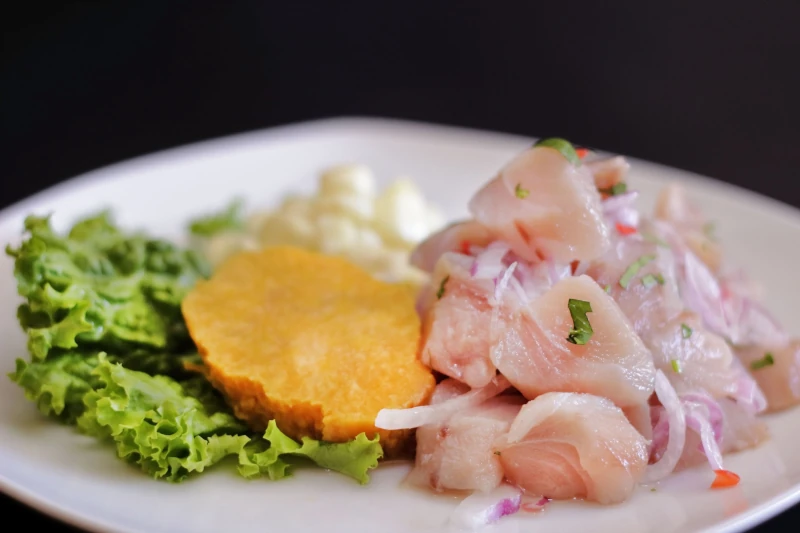
Savoring the Diversity of Coastal Flavors
As you explore coastal food in Peru, you’ll notice that each region brings its unique touch to the cuisine. Any seafood dish in Lima, the freshness of the ingredients always stands out. Peruvian cuisine’s diversity is along the coast, where the sea provides an endless supply of inspiration.
Many coastal dishes incorporate ingredients like sweet potatoes, yuca, and corn, which complement the flavors of the ocean. These side dishes are not mere afterthoughts; they are integral to the meal, adding depth and complexity. For example, the sweetness of roasted sweet potato perfectly balances the acidity of ceviche.
Even if seafood isn’t typically your go-to, the coastal cuisine in Peru might just change your mind. The delicate preparation and the bold flavors make these dishes an unforgettable experience. As you continue your journey through the food in Peru, make sure to savor every bite of the coastal delights.
A signature dish is the aji de gallina. This plate has the famous aji amarillo and has a side of boiled eggs. Is similar to papa a la huancaina.
We also recommend the incredible lomo saltado. It has stir fry meat with a side of french fries.
Another dish is the causa. It is a mashed potatoes construct with a filling of tuna or chicken.
Remember that Peruvian coastal cuisine is not just about the food but also about the experience. Enjoying a meal with an ocean view, surrounded by the sounds of the sea, enhances the flavors and makes the meal even more memorable. The coastal food in Peru will leave a lasting impression.
Highland Flavors: Traditional Andean Dishes You Can’t Miss
The Andean region of Peru offers a unique culinary experience, steeped in tradition and rich flavors. As you explore the food in Peru, you’ll find that the highlands present a distinct contrast to coastal cuisine. The dishes here are hearty, nourishing, and deeply connected to the land and its history.
One of the most iconic dishes from the Andean region is pachamanca. This ancient cooking method involves slow-roasting meat and vegetables in an earth oven, heated by hot stones. The result is a feast that includes ingredients like lamb, pork, potatoes, corn, and herbs native to the Andes.
Another traditional Andean dish that you can’t miss is cuy, or guinea pig. This dish may surprise some, but it has been a staple in the Andean diet for centuries. Cooks roast it or fry it until crispy and have a side of potatoes or corn.
The Andean region also boasts one of Peru’s most beloved dishes: pollo a la brasa. Although popular throughout Peru, this roasted chicken dish has its roots in the highlands. Marinated with a blend of spices including cumin, garlic, and aji, and cooked on a rotisserie. The chicken is juicy, flavorful, and usually served with French fries and salad.

Discovering Andean Soups and Stews
In the cold highlands, soups and stews play a crucial role in daily meals. One must-try is chupe de quinua, a hearty quinoa soup that showcases the nutritional power of this ancient grain. The soup combines quinoa, potatoes, vegetables, and sometimes cheese or eggs, creating a warming and filling dish.
Another popular soup is adobo arequipeño, a flavorful pork stew from the city of Arequipa. This dish features pork marinated in chicha de jora (a traditional fermented corn drink). It also has onions, garlic, and spices, then slow-cooked until tender. Generally is for a hearty breakfast, especially on weekends.
For those who enjoy rich and robust flavors, oca con queso is a must. This dish combines oca, a tuber native to the Andes, with creamy cheese sauce. The oca’s natural sweetness contrasts beautifully with the savory cheese, creating a unique and satisfying dish.
Regional Specialties and Unique Ingredients
The Andean region uses indigenous ingredients like oca, maca, and chuño. Maca, a root vegetable that works as a supplement, is also present in traditional dishes. It adds a nutty flavor and nutritional benefits. Chuño, a freeze-dried potato, is a staple in many highland dishes, offering a chewy texture and earthy taste.
In cities like Cusco and Puno, you’ll find these ingredients in various forms, from hearty stews to side dishes. For example, dry potato is a key ingredient in carapulcra. It is a traditional stew made with dried potatoes, pork, peanuts, and a blend of spices. The result is a rich and flavorful dish that reflects the ingenuity and resourcefulness of Andean cooking.
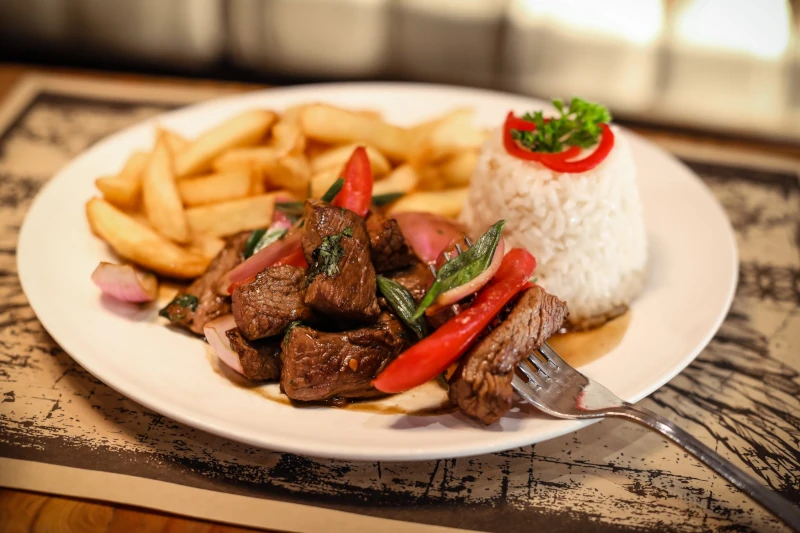
Exploring the Highland Markets and Local Eateries
To truly appreciate the food in Peru’s Andean region, you should visit local markets and eateries. Markets like San Pedro in Cusco offer a glimpse into the daily lives of the locals and the ingredients they cherish. Here, you can find everything from fresh vegetables and spices to prepared foods like anticuchos. These are skewers of marinated beef heart grilled to perfection.
Local eateries, or picanterías, are another excellent way to experience traditional Andean flavors. These establishments serve hearty meals made from locally sourced ingredients, often cooked using time-honored methods.
As you continue your journey through the food in Peru, don’t miss the chance to savor the unique flavors of the Andean highlands. Each dish tells a story of the land, the people, and the traditions that have shaped Peruvian cuisine for centuries. Sample cuy for the first time or indulging in a bowl of adobo arequipeño. The highland flavors are sure to leave a lasting impression.
Amazonian Bites: Unique Flavors from Peru’s Rainforest Regions
The Amazon rainforest in Peru offers a culinary adventure that showcases the diverse and unique flavors of Amazonian cuisine. The food in Peru’s rainforest regions is a vibrant mix of unique ingredients, traditional cooking methods. You won’t find these flavors anywhere else. From the rich Peruvian cacao to the colorful fruits of Peru, every bite tells a story of the jungle.
One of the standout dishes in Amazonian cuisine is juane, a flavorful rice dish wrapped in banana leaves. Juane has rice, chicken, eggs, olives, and spices, all cooked together to create a fragrant, savory meal. This dish is often enjoyed during festivals and is a perfect introduction to the rich flavors of the rainforest.
Another must-try dish is tacacho con cecina, which combines mashed green plantains with smoked pork. The plantains are fried and mashed with lard, then served alongside the salty, smoky cecina. This combination highlights the Amazonian tradition of using locally sourced ingredients to create hearty, satisfying meals.
Exploring the Fruits and Flavors of the Amazon
The Amazon is also home to some of the most unique fruits of Peru, which play a significant role in the region’s cuisine. Camu camu, aguaje, and cocona are just a few examples of the vibrant fruits found in Amazonian markets. These fruits are often used in juices, desserts, and even savory dishes, adding a burst of fresh, tropical flavor.
Peruvian cacao is another gem from the rainforest, known for its deep, rich flavor. The cacao from this region is considered some of the best in the world, and you can find it in various forms—from raw beans to artisanal chocolates. A visit to a local cacao farm or chocolate shop is a must for any food lover exploring Amazonian cuisine in Peru.
Peru’s coffee, especially from the Amazon region, is also a highlight for visitors. The region’s fertile soil and unique climate produce coffee beans with distinctive flavors and aromas. Tasting freshly brewed coffee from this region is a sensory experience that reflects the richness of the Amazonian landscape.
The Amazonian region of Peru offers a truly unique culinary experience, with flavors that reflect the biodiversity and cultural richness of the rainforest. As you explore the food in Peru, don’t miss the opportunity to try the vibrant dishes and ingredients from this incredible part of the country. Whether you’re savoring juane at a local festival or enjoying a cup of fresh Amazonian coffee, the flavors of the rainforest will leave a lasting impression.
